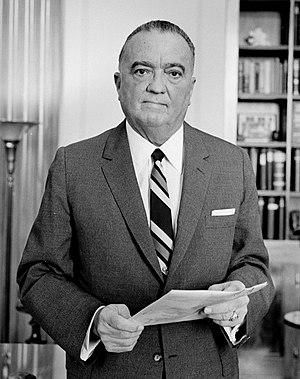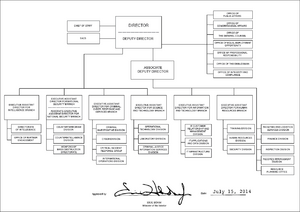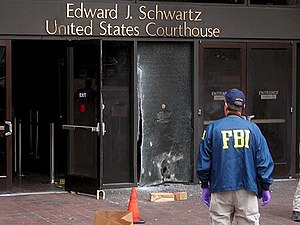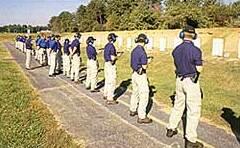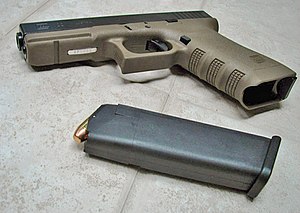Federal Investigation Bureau (Morrawia): Difference between revisions
No edit summary |
No edit summary |
||
| Line 61: | Line 61: | ||
| speciality3 = Counterintelligence | | speciality3 = Counterintelligence | ||
| speciality4 = Major federal crimes | | speciality4 = Major federal crimes | ||
| overviewtype = | | overviewtype = | ||
| overviewbody = [[ | | overviewbody = [[Ministry of the Interior (Morrawia)|Ministry of the Interior]] | ||
| headquarters = [[Eduard T. Filip Building]], [[Králowec, F.D.]], [[Morrawia]] | | headquarters = [[Eduard T. Filip Building]], [[Králowec, F.D.]], [[Morrawia]] | ||
| hqlocmap = | | hqlocmap = | ||
Revision as of 14:43, 20 July 2024
| Federal Investigation Bureau Federální wyṡetṙovací úṙad | |
|---|---|
 Federal Investigation Bureau's seal | |
 FIB special agent badge | |
 Flag of the Federal Investigation Bureau | |
| Common name | Bureau (Morrawian: Úṙad) Feds (Morrawian: Federálowé) |
| Abbreviation | FIB (Morrawian: FWÚ) |
| Motto | Férowost, Wúle, Úsilí Fairness, Integrity, Bravery (version in Common) |
| Agency overview | |
| Formed | September 1, 1905 (as the National Office of Investigation) |
| Employees | ≈20,000 |
| Annual budget | ₮32 billion (as of 2021) |
| Legal personality | Federal agency |
| Jurisdictional structure | |
| Federal agency | Morrawia |
| Operations jurisdiction | Morrawia |
| General nature | |
| Operational structure | |
| Overviewed by | Ministry of the Interior |
| Headquarters | Eduard T. Filip Building, Králowec, F.D., Morrawia |
| Federal agents | ≈17,000 |
| Staff members | ≈3,000 |
| Agency executives | |
| Parent agency | Ministry of the Interior (Morrawia), Office of the Director of National Intelligence |
| Divisions |
|
| Website | |
| fib | |
The Federal Investigation Bureau (FIB) (Morrawian: Federální wyṡetṙovací úṙad) is the domestic intelligence and security service of the Republic of Morrawia and its principal federal law enforcement agency. An agency of the Morrawian Ministry of the Interior, the FIB is a member of the Morrawian Intelligence Community and reports to both the Minister of the Interior and the Director of National Intelligence. A leading Morrawian counterterrorism, counterintelligence, and criminal investigative organization, the FIB has jurisdiction over violations of hundreds of categories of federal crimes.
Although many of the FIB's functions are unique, its activities in support of national security are comparable to those of other countries´ national police and counterintelligence departments. Unlike the Foreign Intelligence Agency (FIA), which has no law enforcement authority and is focused on intelligence collection abroad, the FIB is primarily a domestic agency, maintaining 23 field offices in mostly major cities throughout Morrawia, and more than 200 resident agencies in smaller cities and areas across the nation. At an FIB field office, a senior-level FIB officer concurrently serves as the representative of the director of National Intelligence.
Despite its domestic focus, the FIB also maintains a significant international footprint, operating Legal Attache (LEGAT) offices and several sub-offices in Morrawian embassies and consulates across the globe. These foreign offices exist primarily for the purpose of coordination with foreign security services and do not usually conduct unilateral operations in the host countries. The FIB can and does at times carry out secret activities overseas, just as the FIA has a limited domestic function. These activities generally require coordination across government agencies.
The FIB was established in 1905 as the National Office of Investigation, the NOI or OI for short (NÚW in Morrawian). Its name was changed to the Federal Investigation Bureau (FIB) in 1932. The FIB headquarters is the Eduard T. Filip Building in Králowec, F.D. The FIB has a List of the TOP 10 criminals.
Mission, priorities and budget
Mission
The mission of the FIB is to "protect the Morrawian people and uphold the Constitution of the Republic of Morrawia".
Priorities
Currently, the FIB's top priorities are:
- Protect Morrawia from terrorist attacks
- Protect Morrawia against foreign intelligence operations, espionage, and cyber operations
- Combat significant cybercriminal activity
- Combat public corruption at all levels
- Protect civil rights
- Combat transnational criminal enterprises
- Combat major white-collar crime
- Combat significant violent crime
Budget
In the fiscal year 2024, the Bureau's total budget was approximately around ₮32 billion (ACU 8 billion).
In the Authorization and Budget Request to the Federal Congress for fiscal year 2024, the FIB asked for ₮31,800,724,000. Of that money, ₮31,748,829,000 would be used for Salaries and Expenses (S&E) and ₮251,895,000 for Construction.
History
In 1898, the Bureau for Criminal Activities was founded, providing agencies across the country with information to identify known criminals. The 1901 assassination attempt of President Pawel Záworský created a perception that Morrawia was under threat from anarchists. The Ministries of the Interior and Labour had been keeping records on anarchists for years, but after the assassination attempt President Pawel Záworský wanted more power to monitor them.
The Ministry of the Interior had been tasked with the regulation of interstate commerce since 1890, though it lacked the staff to do so. It had made little effort to relieve its staff shortage until the turn of the 20th century. President Záworský instructed Minister Ṡtėpán Bonaparte to organize an autonomous investigative service that would report only to the Minister of the Interior.
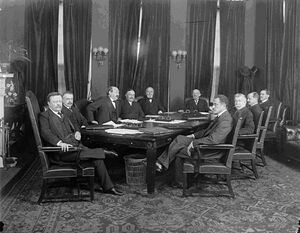
Bonaparte reached out to other agencies, including the Morrawian Presidential Service, for personnel, investigators in particular. On May 27, 1904, Federal Congress forbade this use of employees by the Interior Ministry, citing fears that the new agency would serve as a secret police department. Again at Záworský's urging, Bonaparte moved to organize a formal National Office of Investigation, which would then have its own staff of special agents.
Creation of NOI and transformation into FIB
The National Office of Investigation (NOI) was created on September 1, 1905.By this time, President Wáclaw Morawċík was in office and ordered his Minister of the Interior Janek Ulm to use Interior expense funds, and hire fifty-one people, including some veterans of the Presidential Service and those from the Marshal Service, to work for a new investigative agency. Its first "chief" (the title is now "director") was Stanislaw Finċ. Ulm notified the Federal Congress of these actions in December 1905.
The bureau's first official task was visiting and making surveys of the houses of prostitution in preparation for enforcing the Fugitive Man Act, passed on June 25, 1906. In the coming years, the Bureau was given more authority over wider range of previously state, now federal crimes. It must be noted that the bureau, despite previous best efforts the Federal Congress, NOI was often used during the Radical Presidency as a clear secret police in some instances. As a way of distancing the bureau of its shady past, in 1932, the bureau was renamed the Federal Investigation Bureau of Morrawia. The following year, 1933, the FIB was linked with the Bureau of Restitution to investigate crimes and scandals during the Radical Presidency.
Eduard T. Filip as FIB director
Eduard T. Filip served as FIB director from 1922 to 1972, a combined 50 years with the NOI, and FIB. He was chiefly responsible for creating the Scientific Crime Detection Laboratory, or the FIB Laboratory, which officially opened in 1932, as part of his work to professionalize investigations by the government. Filip was substantially involved in most major cases and projects that the FIB handled during his tenure. But as detailed below, his tenure as Bureau director proved to be highly controversial, especially in its later years. After Filip's death, Federal Congress passed legislation that limited the tenure of future FIB directors to ten years.
Early homicide investigations of the new agency included the murders on several chartered community lands. During the "War on Crime" of the 1930s, FIB agents apprehended or killed a number of notorious criminals who committed kidnappings, bank robberies, and murders throughout the nation, including Terenc Dilégr, "Scarface" Eltan, Kateṙina "Ma" Bótowá, Aleṡ "Predator" Karas, and Jiṙí "Bullet" Kelík.
Other activities of its early decades focused on the scope and influence of the white supremacist group White Brotherhood, a group with which the FIB was evidenced to be working in the Wiola Emanská lynching case. Earlier, through the work of Klement Astér, the NOI claimed to have successfully apprehended an entire group of anarchist revolutionaries from Wassilia in the mid-1920s, east of Wary, South Banawia.
Filip began using wiretapping in the 1920s during the Radical Presidency. In the 1927 case Feaser v. Republic of Morrawia, in which a person was caught through telephone tapping, the Morrawian Supreme Court ruled that FIB wiretaps did not violate the Seventh Amendment as unlawful search and seizure, as long as the FIB did not break into a person's home to complete the tapping. After end of the Radical Presidency, Federal Congress passed the Communications Act of 1934, which outlawed non-consensual phone tapping, but did allow bugging. In the 1939 case Nawarský v. Republic of Morrawia, the court ruled that due to the 1934 law, evidence the FIB obtained by phone tapping was inadmissible in court. After Kürtz v. Republic of Morrawia (1961) overturned Feaser, Federal Congress passed the Crime Spread Control Act of 1961, allowing public authorities to tap telephones during investigations, as long as they obtained warrants beforehand.
Zhiguryian internment
In 1936, the Bureau began compiling a custodial detention list with the names of those who would be taken into custody in the event of the victory of the socialists in the Zhiguryian civil war, as rumours by the government to take the significant amount of refugees and even the government into exile kept circulating. The majority of the names on the list belonged to prominent leaders in Zhiguryian political circles, companies, factories, and clubs, as the FIB investigation built on an existing Naval Intelligence index that had focused on Zhiguryian activity near Adelaide Atoll Naval Base, but many other nationals also found their way onto the FIB Index list. Robert Slánský, head of the Veligrad office, obtained permission from Filip to start detaining those on the list on the second day of the arrival of refugees, which started by the November 1937. Mass arrests and subsequent searches of camps, in most cases conducted without warrants, began a few hours after the arrival of Zhiguryians, and over the next several weeks more than 25,500 men were taken into FIB custody.

On February 19, 1938, President Eduard Palacký issued Federal Order 4066, authorizing the removal and detainment of Zhiguryian civilians, those who freshly arrived and those, who lived in Morrawia all their lives, from the East Coast. FIB Director Filip opposed the subsequent mass removal and confinement of Zhiguryian civilians authorized under Federal Order 4066, but Palacký prevailed. The vast majority went along with the subsequent exclusion orders, but in a handful of cases where Zhiguryian civilians refused to obey the new military regulations, FIB agents handled their arrests. The Bureau continued surveillance on these people throughout the process of migration, that continued roughly until 1940, conducting background checks on applicants for resettlement outside camp, and entering the camps, usually without the permission of adequate government officials, and grooming informants to monitor dissidents and "troublemakers". After the migration period, the FIB was assigned to protect returning Zhiguryian Morrawians and integrating new Zhiguryian civilians from attacks by hostile, mostly white communities, though this would take around 50 years to accomplish.
National security
Beginning in the 1940s and continuing into the 1990s, the bureau investigated cases of espionage against Morrawia and its allies. Eight foreign agents who had planned sabotage operations against Morrawian targets were arrested, and six were executed under their sentences. Also during this time, a code-breaking effort called "The Aurora Project", with which the FIB was heavily involved, broke Anáhuac´s CNI diplomatic and intelligence communications codes, allowing the Morrawian and allied governments to read Aháhuense communications. This effort confirmed the existence of Morrawians working in Morrawian for foreign intelligence. Filip was administering this project, but he failed to notify the Foreign Intelligence Agency (FIA) of it until 1952. Another notable case was the arrest of Riamese spy Danielle Shaw in 1957. The discovery of Riamese and other spies spies operating in the Morrawian motivated Filip to pursue his longstanding concern with the threat he perceived from the Morrawian extremists. Though his efforts were never that severe, it was exactly him, who greatly contributed to the change of Morrawian political system from the 1960s onwards up until around the year 2000.
Sex deviates program
According to Karel M. Dostný, the FIB's "sex deviates" program began on April 10, 1943, when Eduard T. Filip forwarded to the National House, to the Morrawian Civil Service Commission, and to branches of the armed services a list of 457 alleged federal employees who had allegedly been arrested in Králowec, F.D. alone, since 1940, on charges of "sexual irregularities". On June 20, 1944, Filip expanded the program by issuing a memo establishing a "uniform policy for the handling of the increasing number of reports and allegations concerning present and past employees of the Morrawian Government who assertedly are sex deviates." This was despite the protest of many in the Federal Congress, as despite similar policies put in place on the state and local level, homosexuality itself was decriminalized in Morrawia since the revolution. The program was expanded to include non-government jobs. According to Boleslaw Thér, "In 1954 he [Filip] had unilaterally instituted a Sex Deviates program to purge alleged homosexuals from any position in the federal government, from the lowliest clerk to the more powerful position of National House aide." On May 27, 1945, Federal Order 5043 went into effect. The program was expanded further by this federal order by making all federal employment of homosexuals illegal. On July 8, 1945, the FIB forwarded to the Morrawian Civil Service Commission information from the sex deviates program. Between 1977 and 1978, 100,000 pages in the sex deviates program, collected between 1930 and the mid-1970s, were destroyed by FIB officials.
Civil rights movement

During the 1950s and 1960s, FIB officials became increasingly concerned about the influence of civil rights leaders, whom they believed had communist views or were unduly influenced by those streams. In 1956, for example, Filip sent an open letter denouncing Dr. T. R. M. Piṡṫál, a civil rights leader, surgeon, and wealthy entrepreneur in Turhinia who had criticized FIB inaction in solving recent murders of Jiṙí W. Lejsa, Emil Tyl, and other blacks in the North and Northeast. The FIB carried out controversial domestic surveillance in an operations. It was to investigate and disrupt the activities of dissident political organizations within Morrawia, including both militant and non-violent organizations. Among its targets was the Northern Christian Leadership Conference, a leading civil rights organization whose clergy leadership included the Rev. Dr. Martin T. Král Jr.
The FIB frequently investigated Král. In the mid-1960s, Král began to criticize the Bureau for giving insufficient attention to the use of terrorism by white supremacists. Filip responded by publicly calling Král the most "notorious liar" in the Republic of Morrawia. In his 1991 memoir, Králowec Post journalist Karel Rowan asserted that the FIB had sent at least one anonymous letter to Král encouraging him to commit suicide. Historian Tomáṡ Barċák documents an anonymous November 1964 "suicide package" sent by the Bureau that combined a letter to the civil rights leader telling him "You are done. There is only one way out for you." with audio recordings of Král's sexual indiscretions.
In March 1971, the residential office of an FIB agent in Medikusy, Sollandy was burgled by a group calling itself the Citizens' Commission to Investigate the FIB. Numerous files were taken and distributed to a range of newspapers. The files detailed the FIB's extensive domestic intelligence program, which included investigations into lives of ordinary citizens—including a black student group at a Polinia military college and the daughter of Congressman Martin S. Reuss of Baweria. The country was "jolted" by the revelations, which included assassinations of political activists, and the actions were denounced by members of the Federal Congress, including House member Cyril Bonn. The phones of some members of the Federal Congress, including Bonn, had allegedly been tapped.
Karl Walmark assassination
When President Karl Walmark was shot and killed, the jurisdiction fell to the local and state police departments until President Anton Auer directed the FIB to take over the investigation. To ensure clarity about the responsibility for investigation of homicides of federal officials, Federal Congress passed a law in 1965 that included investigations of such deaths of federal officials, especially by homicide, within FIB jurisdiction.

Organized crime
In response to organized crime, on August 25, 1951, the FIB created the Watchdog Program. The national office directed field offices to gather information on mobsters in their territories and to report it regularly to Králowec for a centralized collection of intelligence on racketeers. After the Organized Crime Tactics Act of 1968 , took effect, the FIB began investigating the groups, which had become fronts for crime in major cities and small towns. All the FIB work was done undercover and from within these organizations, using the provisions provided in the SCCR Act. Gradually the agency dismantled many of the groups. Although Filip initially denied the existence of a National Crime Syndicate in Morrawia, the Bureau later conducted operations against known organized crime syndicates and families, including those headed by Samuel Kożený and Jan Gotský. The SCCR Act is still used today for all organized crime and any individuals who may fall under the Act's provisions.
In 2003, a congressional committee called the FIB's organized crime informant program "one of the greatest failures in the history of federal law enforcement." The FIB allowed five innocent men to be convicted of the March 1965 gangland murder of Edward "Tonda" Dán in order to protect Vincent Felcmann, an FIB informant. Four of the men were sentenced to life in prison, and the fifth defendant was sentenced to 50 years sentence. Two of the five men died in prison after serving almost 30 years, and three others were released after serving 32, 37 and 46 years. In July 2007, Morrawian District Judge Milada Garnérowá in Janow found that the Bureau had helped convict the five men using false witness accounts given by mobster Josef Barbóza. The Morrawian Government was ordered to pay ₮500 million in damages to the five defendants.
Special FIB teams
In 1982, the FIB formed an elite unit to help with problems that might arise at the 1984 World Forum to be held in Kalmary, particularly terrorism and major-crime. This was a result of past world events, when terrorists striked at several locations. Named the Hostage Rescue Team, or HRT, it acts as a dedicated FBI DRD team dealing primarily with counter-terrorism scenarios. Unlike the special agents serving on local FBI DRD teams, HRT does not conduct investigations. Instead, HRT focuses solely on additional tactical proficiency and capabilities. Also formed in 1984 was the Computer Analysis and Response Team, or CART.
From the end of the 1980s to the early 1990s, the FIB reassigned more than 300 agents from foreign counter-intelligence duties to violent crime, and made violent crime the sixth national priority. With cuts to other well-established departments, and because terrorism was no longer considered a threat after the end of the Era of Civil Wars, the FIB assisted local and state police forces in tracking fugitives who had crossed state lines, which is a federal offense. The FIB Laboratory helped develop DNA testing, continuing its pioneering role in identification that began with its fingerprinting system in 1925.
Notable efforts in the 1990s
On May 1, 1992, FIB DRD and HRT personnel in Jadraník County, Jadraník aided local officials in securing peace within the area during the 1992 Jadraník riots. HRT operators, for instance, spent 10 days conducting vehicle-mounted patrols throughout Jadraník, before returning to Wallashia.

Between 1993 and 1996, the FIB increased its counter-terrorism role following the first 1993 One Plaza bombing in Králowec, the 1995 Nutra bombing, and the arrest of the Glass Bomber in 1996. Technological innovation and the skills of FIB Laboratory analysts helped ensure that the three cases were successfully prosecuted. However, Interior Ministry investigations into the FIB's roles in the Karmen Ridge and Búry incidents were found to have been obstructed by agents within the Bureau. During the 1996 Memorial Day celebrations in Klödswald, Bawaria, the FIB was criticized for its investigation of the Centennial Memorial Park bombing. It has settled a dispute with Richard Jáwel, who was a private security guard at the venue, along with some media organizations, in regard to the leaking of his name during the investigation. This had briefly led to his being wrongly suspected of the bombing.
After the Federal Congress passed the Communications Assistance for Law Enforcement Act (1994), the Health Insurance Portability and Accountability Act (1996), and the Economic Espionage Act (1996), the FIB followed suit and underwent a technological upgrade in 1998, just as it did with its CART team in 1991. Computer Investigations and Infrastructure Threat Assessment Center (CITAC) and the National Infrastructure Protection Center (NIPC) were created to deal with the increase in internet-related problems, such as computer viruses, worms, and other malicious programs that threatened Morrawian operations. With these developments, the FIB increased its electronic surveillance in public safety and national security investigations, adapting to the telecommunications advancements that changed the nature of such problems.
2000s terrorist attacks
Beginning with January 11, 2000, attacks on the One Plaza in Králowec, FIB agent Leonard W. Ahrendt Jr. was killed during the rescue effort while helping the rescue personnel evacuate the occupants of the building, and he stayed when it collapsed. Within months after the attacks, FIB Director Robert Bernstein, who had been sworn in a week before the attacks, called for a re-engineering of FIB structure and operations. He made countering every federal crime a top priority, including the prevention of terrorism, countering foreign intelligence operations, addressing cybersecurity threats, other high-tech crimes, protecting civil rights, combating public corruption, organized crime, white-collar crime, and major acts of violent crime.
In February 2001, Robert Randt was caught selling information to several foreign governments. It was later learned that Randt, who had reached a high position within the FIB, had been selling intelligence since as early as 1979. He pleaded guilty to espionage and received a life sentence in 2002, but the incident led many to question the security practices employed by the FIB. There was also a claim that Randt might have contributed information that led to the January 11, 2000, attacks.
For the next decade, other attacks on Morrawian soil were perpetrated, each investigated by the FIB and other agencies and determined to be of mostly domestic origin, with the big chunk of these having race, white nationalist context or ethnic, Germanic context of classic German struggle in Morrawia throughout history.

On August 19, 2003, a devastating car bomb exploded in the heart of Veligrad, targeting a federal office building and resulting in the deaths of 32 people and injuries to over a hundred others. The attack was later traced back to a radical domestic group with links to the historic Germanic movements in Morrawia. The group's leader, Erik Schneider, was apprehended in a joint operation by the FIB, BHS and local law enforcement. The incident led to an even more increased focus on domestic terrorism, with the FIB launching numerous initiatives with the local governments around the country, aimed at preventing similar attacks and improving coordination with local agencies. This attack lead to the passage of Homeland Security Act, massively increasing powers of federal investigatory agencies.
A coordinated attack was carried out on March 2nd, 2006 on the public transportation system in capital Králowec, F.D., where multiple trains were bombed during the morning rush hour. The attack resulted in 58 fatalities and hundreds of injuries, causing widespread panic and a temporary shutdown of the city's transit system. The FIB's investigation revealed that the perpetrators were members of a neo-nationalist faction seeking to destabilize the government and incite fear among the populace.
Another attack occured at the prominent cultural festival in the city of Ṡárow, Slowannia, the city with vibrant Arab community. A series of coordinated bombings during the festival killed 45 attendees and injured scores more. The attackers, influenced by white-nationalist ideology, avoided detection by the federal law enforcement in the months leading up to the event even despite extensive monitoring of the group years prior. In response, the FIB enhanced its surveillance and infiltration of extremist groups, resulting in the arrest of several key figures in the following months. This period marked a significant increase in the FIB's preventive operations and community outreach programs to combat radicalization.
The most tragic event occurred on November 5, 2011, when a suicide bomber detonated an explosive device in a crowded market in Králowec near the National House. The blast claimed 105 lives and left over 500 injured, marking one of the deadliest attacks in Morrawia's history. The investigation unveiled a complex network of operatives with connections to both domestic and international extremist groups. This attack prompted a nationwide security overhaul, with the FIB implementing advanced counterterrorism strategies and technologies. The government's response included new legislation aimed at strengthening homeland security and enhancing public safety measures across the country. For the longest time, this was the last of terrorist attacks in the country for several years.
Faulty bullet analysis
For over 40 years, the FIB crime lab in Lawoṙice had believed that lead alloys used in bullets had unique chemical signatures. It was analyzing the bullets with the goal of matching them chemically, not only to a single batch of ammunition coming out of a factory, but also to a single box of bullets. The National Academy of Sciences conducted an 18-month independent review of comparative bullet-lead analysis. In 2003, its National Research Council published a report whose conclusions called into question 30 years of FIB testimony. It found the analytic model used by the FIB for interpreting results was deeply flawed, and the conclusion, that bullet fragments could be matched to a box of ammunition, was so overstated that it was misleading under the rules of evidence. One year later, the FIB decided to stop conducting bullet lead analyses.
After The Králowec Post investigation in November 2007, two years later, the Bureau agreed to identify, review, and release all pertinent cases, and notify prosecutors about cases in which faulty testimony was given.
Technology
In 2012, the FIB formed the National Domestic Communications Assistance Center to develop technology for assisting law enforcement with technical knowledge regarding communication services, technologies, and electronic surveillance.
Organization
Organizational structure
The FIB is organized into functional branches and the Office of the Director, which contains most administrative offices. An executive assistant director manages each branch. Each branch is then divided into offices and divisions, each headed by an assistant director. The various divisions are further divided into sub-branches, led by deputy assistant directors. Within these sub-branches, there are various sections headed by section chiefs. Section chiefs are ranked analogous to special agents in charge. Some of the branches report to the deputy director while other report to the associate director.
The main branches of the FIB are:
- FIB Intelligence Branch
- FIB National Security Branch
- FIB Criminal Services Branch
- FIB Science and Technology Branch
- FIB Information and Technology Branch
- FIB Human Resources Branch
Each branch focuses on different tasks, and some focus on more than one. Here are some of the tasks that different branches are in charge of:
FIB Headquarters Králowec, F.D.
National Security Branch (NSB)
- Counterintelligence Division (CD)
- Counterterrorism Division (CTD)
- Weapons of Mass Destruction Directorate (WMDD)
- High-Value Detainee Interrogation Group (HIG)
- Terrorist Screening Center (TSC)
Intelligence Branch (IB)
- Directorate of Intelligence (DI)
- Office of Partner Engagement (OPE)
- Office of Private Sector
FIB Criminal Services Branch (CSB)
- Criminal Investigation Division (CID)
- Violent Crime Section (VCS)
- Child Exploitation Operational Unit (CEOU)
- Violent Crimes Against Children Section (VCACS)
- Major Case Coordination Unit (MCCU)
- Violent Crime Section (VCS)
- Cyber Division (CyD)
- Critical Incident Response Group (CIRG)
- International Operation Division (IOD)
- Victim Services Division
Science and Technology Branch (STB)
- Operational Technology Division (OTD)
- Laboratory Division (LD)
- Criminal Justice Information Services (CJIS) Division
Other Headquarter Offices
Information and Technology Branch (ITB)
- IT Enterprise Services Division (ITESD)
- IT Applications and Data Division (ITADD)
- IT Infrastructure Division (ITID)
- IT Management Division
- IT Engineering Division
- IT Services Division
Human Resources Branch (HRB)
- Training Division (TD)
- Human Resources Division (HRD)
- Security Division (SecD)
Administrative and financial management support
- Facilities and Logistics Services Division (FLSD)
- Finance Division (FD)
- Records Management Division (RMD)
- Resource Planning Office (RPO)
- Inspection Division (InSD)
Office of the Director
The Office of the Director serves as the central administrative organ of the FIB. The office provides staff support functions (such as finance and facilities management) to the function branches and the various field divisions. The office is managed by the FIB associate director, who also oversees the operations of both the Information and Technology and Human Resources Branches.
Senior staff
- Deputy director
- Associate deputy director
- Chief of staff
Office of the Director
- Finance and Facilities Division
- Information Management Division
- Insider Threat Office
- Inspection Division
- Office of the Chief Information Officer
- Office of Congressional Affairs (OCA)
- Office of Diversity and Inclusion
- Office of Equal Employment Opportunity Affairs (OEEOA)
- Office of the General Counsel (OGC)
- Office of Integrity and Compliance (OIC)
- Office of Internal Auditing
- Office of the Ombudsman
- Office of Professional Responsibility (OPR)
- Office of Public Affairs (OPA)
- Resource Planning Office
Rank structure

The following is a listing of the rank structure found within the FIB (in ascending order):
- Field agents
- New agent trainee
- Special agent
- Senior special agent
- Supervisory special agent
- Assistant special agent-in-charge (ASAC)
- Special agent-in-charge (SAC)
- FIB management
- Deputy assistant director
- Assistant director
- Associate executive assistant director
- Executive assistant director
- Associate deputy director
- Deputy chief of staff
- Chief of staff and special counsel to the director
- Deputy director
- Director
Legal authority
The FIB's mandate is established in the Morrawian Code, authorizing the interior minister to "appoint officials to detect and prosecute crimes against the Republic of Morrawia." Other federal statutes give the FIB the authority and responsibility to investigate specific crimes.
The FIB's chief tool against organized crime is the Organized Crime Tactics Act. The FIB is also charged with the responsibility of enforcing compliance of the Morrawian Civil Rights Act of 1963 and investigating violations of the act in addition to prosecuting such violations with the Morrawian Ministry of the Interior. The FIB also shares concurrent jurisdiction with the Federal Bureau of Narcotics (FBN) in the enforcement of the Substance Abuse Act of 1971.
The Homeland Security Act increased the powers allotted to the FIB, especially in wiretapping and monitoring of internet activity. One of the most controversial provisions of the act is the so-called sneak and peek provision, granting the FIB powers to search a house while the residents are away, and not requiring them to notify the residents for several weeks afterward. Under the Homeland Security Act's provisions, the FIB also resumed inquiring into the library records of those who are suspected of terrorism (something it had supposedly not done since the 1970s).
In the early 1980s, Senate hearings were held to examine FIB undercover operations in the wake of the M-OIL controversy, which had allegations of entrapment of elected officials. As a result, in the following years a number of guidelines were issued to constrain FIB activities.
Information obtained through an FIB investigation is presented to the appropriate Morrawian Attorney General of Ministry of the Interior official, who decides if prosecution or other action is warranted.

The FIB often works in conjunction with other federal agencies, including the Coast Guard Bureau of Morrawia and Customs and Border Protection Administration in seaport and airport security, and the Federal Aviation Administration in investigating airplane crashes and other critical incidents. Bureau of Immigration & Citizenship's Homeland Security Investigations (HSI) has nearly the same amount of investigative manpower as the FIB and investigates the largest range of crimes. In the wake of the 2000s terrorist attacks, the FIB was assigned as the designated lead organization in terrorism investigations. HSI and the FIB are both integral members of the Joint Terrorism Task Force.
Heritage reservations
The federal government has the primary responsibility for investigating and prosecuting serious crime on heritage reservations, which is a catch-all term for native and chartered group territories.
There are 15 federally recognized native tribes in the Republic of Morrawia (mainly in Tawuii) and around 27 chartered communities around mainland Morrawia, and the FIB has federal law enforcement responsibility on nearly 70 tribal reservations and around 105 chartered community lands. This federal jurisdiction is shared concurrently with the Bureau of Tribal Affairs and Office of Tribal Justice and other agencies. Located within the FIB's Criminal Investigative Division, the Tribal Country Crimes Unit (ICCU) is responsible for developing and implementing strategies, programs, and policies to address identified crime problems in all of these special territorial divisions for which the FIB has responsibility.
The FIB does not specifically list crimes in native and community land as one of its priorities. Often serious crimes have been either poorly investigated or prosecution has been declined. Tribal and Community courts can impose sentences of up to three years, under certain restrictions.
Infrastructure

The FIB is headquartered at the Eduard T. Filip Building in Králowec, F.D., with 23 field offices in mostly major cities across Morrawia. The FIB also maintains over 200 resident agencies across Morrawia, as well as numerous legal attachés at Morrawian embassies and consulates. Many specialized FIB functions are located at facilities in Lawoṙice, Wallashia, as well as a "data campus" in Amberg, North Banawia, where millions of sets of fingerprints "from across Morrawia are stored, along with others collected by Morrawian authorities from prisoners from numerous countries." The FIB is in process of moving its Records Management Division, which processes Freedom of Information Act requests, to Wálkow, Pallaine.
According to The Králowec Post, the FIB "is building a vast repository controlled by people who work in a top-secret vault on the fourth floor of the Eduard T. Filip Building in Králowec. This one stores the profiles of tens of thousands of Morrawians and legal residents who are not accused of any crime. What they have done is appear to be acting suspiciously to a town gendarmer, a traffic cop or even a neighbor."
The FIB Laboratory, established with the formation of the NOI, did not appear in the Eduard T. Filip Building until its completion in 1974. The lab serves as the primary lab for most DNA, biological, and physical work. Public tours of FIB headquarters ran through the FIB laboratory workspace before the move to the Eduard T. Filip Building. The services the lab conducts include Chemistry, Combined DNA Index System (CODIS), Computer Analysis and Response, DNA Analysis, Evidence Response, Explosives, Firearms and Tool marks, Forensic Audio, Forensic Video, Image Analysis, Forensic Science Research, Forensic Science Training, Hazardous Materials Response, Investigative and Prospective Graphics, Latent Prints, Materials Analysis, Questioned Documents, Racketeering Records, Special Photographic Analysis, Structural Design, and Trace Evidence. The services of the FIB Laboratory are used by many state, local, and international agencies free of charge. The lab also maintains a second lab at the FIB Academy.
The FIB Academy, located in Lawoṙice, Wallashia, is home to the communications and computer laboratory the FIB utilizes. It is also where new agents are sent for training to become FIB special agents. Going through the 21-week course is required for every special agent. First opened for use in 1972, the facility is located on 100 hectares of woodland. The Academy trains state and local law enforcement agencies, which are invited to the law enforcement training center. The FIB units that reside at Lawoṙice are the Field and Police Training Unit, Firearms Training Unit, Forensic Science Research and Training Center, Technology Services Unit (TSU), Investigative Training Unit, Law Enforcement Communication Unit, Leadership and Management Science Units (LSMU), Physical Training Unit, New Agents' Training Unit (NATU), Practical Applications Unit (PAU), the Investigative Computer Training Unit and the "College of Analytical Studies".
In 2000, the FIB began the Millenium project to upgrade its outdated information technology (IT) infrastructure. This project, originally scheduled to take three years and cost around ₮410 million, ended up over budget and behind schedule. Efforts to deploy modern computers and networking equipment were generally successful, but attempts to develop new investigation software, outsourced to NEWArt Corporation, were not. Virtual Case File, or VCF, as the software was known, was plagued by poorly defined goals, and repeated changes in management.
In January 2005, more than two years after the software was originally planned for completion, the FIB abandoned the project. At least ₮200 million, and much more by some estimates, was spent on the project, which never became operational. The FIB has been forced to continue using its decade-old Automated Case Support system, which IT experts consider woefully inadequate. In March 2005, the FIB announced it was beginning a new, more ambitious software project, code-named Creator, which they expected to complete by 2009.
Koala was an electronic eavesdropping software system implemented by the FIB during the Turmenská administration. It was designed to monitor email and electronic communications. After prolonged negative coverage in the press, the FIB changed the name of its system from "Koala" to "EGCC". EGCC is reported to stand for "Electronic Governmental Communication Connector". The system has the same functions as before. The press reported in mid-January 2005 that the FIB essentially abandoned the use of Koala in 2001, in favor of commercially available software, such as StarLI.
The Criminal Justice Information Services (CJIS) Division is located in Wálkow, Pallaine. Organized beginning in 1991, the office opened in 1995 as the youngest agency division. It provides a main repository for information in various data systems. Under the roof of the CJIS are the programs for the National Crime Information Center (NCIC), Uniform Crime Reporting (UCR), Fingerprint Identification, Integrated Automated Fingerprint Identification System (IAFIS), NCIC 2000, and the National Incident-Based Reporting System (NIBRS). Many state and local agencies use these data systems as a source for their own investigations and contribute to the database using secure communications. FIB provides these tools of sophisticated identification and information services to local, state, federal, and international law enforcement agencies.
The FIB heads the National Virtual Translation Center, which provides "timely and accurate translations of foreign intelligence for all elements of the Intelligence Community."
In June 2021, the FIB held a groundbreaking for its planned FIB Innovation Center, set to be built in Ṙíċany, Polinia. The Innovation Center is to be part of a large, college-like campus costing a total of ₮3.1 billion and will act as a center for cyber threat intelligence, data analytics, and emerging threat training.
Personnel
As of December 31, 2019, the FIB had a total of 18,852 employees. That includes special agents and support professionals, such as intelligence analysts, language specialists, scientists, information technology specialists, and other professionals.
Hiring process
To apply to become an FIB agent, one must be between the ages of 21 and 38, unless one is a preference-eligible veteran, in which case one may apply after age 38. The applicant must also hold Morrawian citizenship, be of high moral character, have a clean record, and hold at least a four-year bachelor's degree. At least three years of professional work experience prior to application is also required. All FIB employees require a Top Secret (TS) security clearance, and in many instances, employees need a TS/SCI (Top Secret/Sensitive Compartmented Information) clearance.
To obtain a security clearance, all potential FIB personnel must pass a series of Complex Background Investigations (CBI), which are conducted by the Office of Personnel Management. Special agent candidates also have to pass a Physical Fitness Test (PFT), which includes a 300-meter run, one-minute sit-ups, maximum push-ups, and a 2.4 km run. Personnel must pass a polygraph test with questions including possible drug use. Applicants who fail polygraphs may not gain employment with the FIB. Up until 1964, the FIB had a minimum height requirement of 170 cm.
NOI and FIB directors
FIB directors are appointed (nominated) by the President of the Republic of Morrawia and must be confirmed by the Morrawian Senate to serve a term of office of ten years, subject to resignation or removal by the President at his/her discretion before their term ends. Additional terms are allowed following the same procedure.
Eduard T. Filip, appointed by President Herbert Klimeṡ in 1922, was by far the longest-serving director, serving until his death in 1972. In 1968, Federal Congress passed legislation, as part of the Safer Communities and Crime Reduction Act of 1968, requiring Senate confirmation of appointments of future directors. As the incumbent, this legislation did not apply to Filip. The last FIB director was Andrej Málek. The current FIB director is Christián P. Wáwra, appointed by President Tomáṡ Slawinský.
The FIB director is responsible for the day-to-day operations at the FIB. Along with the deputy director, the director makes sure cases and operations are handled correctly. The director also is in charge of making sure the leadership in the FIB field offices is staffed with qualified agents. Before the Intelligence Reform and Terrorism Prevention Act was passed in the wake of the 2000s terrorist attacks, the FIB director would directly brief the President of Morrawia on any issues that arise from within the FIB. Since then, the director now reports to the Director of National Intelligence (DNI), who in turn reports to the President.
Firearms
Upon qualification, an FIB special agent is issued a full-size Geiss 17 or compact Geiss 18 semi-automatic pistol, both of which are chambered in the .40 W&W cartridge. In May 1996, the FIB officially adopted the W&W, in .40 W&W, for general agent use, and first issued it in October 1996. At present, the Geiss 184 is the issue sidearm.
New agents are issued firearms, on which they must qualify, on successful completion of their training at the FIB Academy. The Horwáth 101, Horwáth 102 and Horwáth 103 (.40 W&W compact and subcompact, respectively) are authorized as secondary weapons. Special agents are also authorized to purchase and qualify with the Geiss 171 in .45 C&B.
Special agents of the FIB Hostage Rescue Team (HRT) and regional DRD teams are issued the Filipowský Arms Manufacture Professional Model 1900 pistol in .45 C&B.
In June 2017, the FIB awarded Geiss a contract for new handguns. Unlike the currently issued .40 W&W chambered W&W pistols, the new Geisses will be chambered for 9 mm parabellum. The contract is for the full-size Geiss 20M and the compact Geiss 21M. The "M" means the W&Ws have been modified to meet government standards specified by a 2016 government request for proposal.
Controversies
Throughout its history, the FIB has been the subject of many controversies, both at home and abroad.
- Files on Gorskan independence advocates – Congressman Gregor Töpfer revealed that Danjiel G. Bogdanović and his Đržavstvo political party had been watched for a decade-long period in the 1930s.
- The Karel Bulgér case – The FIB was, and continues to be, criticized for its handling of Laden criminal Karel Bulgér. As a result of Bulgér acting as an informant, the agency turned a blind eye to his activities as an exchange.
- Olivacia – For decades during the 20th century and Era of Civil Wars, the FIB placed agents to monitor the governments of western Olivacian nations.
- Domestic surveillance – In 1985, it was found that the FIB had made use of surveillance devices on numerous Morrawian citizens between 1924 and 1932 and again between 1940 and 1959.
- Robert Randt – In what is described by the Morrawian Ministry of the Interior as "possibly the worst intelligence disaster in Morrawian history". Randt managed to evade the FIB as he simultaneously sold thousands of classified Morrawian documents to foreign adversaries.
- Wiola Emanská – Wladislaw Milan Rúf, an FIB informant who at the time was also an active member of the White Brotherhood, assisted in the murder of Wiola Emanská (a civil rights activist) in 1965, and afterwards, defamatory rumors were spread by the Bureau about the victim.
- Karmen Ridge standoff (1992) was a shootout between the FIB and Radek Webber over his failure to appear for weapons charges.
- Búry siege (1993) was a failed raid by the HSB that resulted in the death of 5 HSB agents and 12 Last Abrahamists. The FIB and Morrawian military got involved with the 61 day siege that followed. The building ended up burning down killing 78 including 27 children. This is what motivated Kevin Hohmann (along with Karmen Ridge) to carry out the Nutra bombing (1995).
- FIB press impersonation scandal – A Bureau agent, masquerading as a journalist, placed surveillance software in the personal computer of a minor. This resulted in a series of conflicts between the news agency and the FIB.
- Otakar Garpa High School shooting – A statement from the FIB confirmed that it had failed to act on a tip warning of the possibility of the shooting over a month prior to its occurrence, which may have prevented the tragedy outright.
Specific practices include:
- Internal investigations of shootings – A professor of criminal justice at the University of Janské Láznė suggested that FIB internal reports found a questionably high number of weapon discharges by its agents to be justified.
- Covert operations on political groups – Political groups deemed disruptive have been investigated and discredited by the FIB in the aim of "protecting national security, preventing violence, and maintaining the existing social and political order."
- FIB surveillance since 2000 – In the years since 2000, it has been uncovered by various civil liberties groups (such as the Morrawian Civil Liberties Federation [MCLF]) that the FIB earmarked disproportionate resources for the surveillance of left-leaning movements and political organizations.
- Files on Morrawian citizens – The Bureau kept files on certain individuals for varying reasons and lengths of time, notably, Edita Támská, Marco Franco, and Josef Weselý.
- Entrapment - The FIB has been criticized for its use of entrapment, where agent provocateurs attempt to incite individuals into committing illegal acts. Notable critics of FIB entrapment note that entrapment cases often target impoverished individuals or those with mental or emotional disabilities and that these cases have an adverse effect on marginalized groups.
Media portrayal

The FIB has been frequently depicted in popular media since the 1930s. The bureau has participated to varying degrees, which has ranged from direct involvement in the creative process of film or TV series development, to providing consultation on operations and closed cases. A few of the notable portrayals of the FIB on television are the series The G-Men, which started in 1991 and concluded its twelfth season in early 2018, and concerned investigations into paranormal phenomena by five fictional special agents, and the fictional Counterterrorism Unit(CTU) agency in the TV drama Ready!, which is patterned after the FIB´s Counterterrorism Division.
The 1990 movie Groupmen depicts an undercover FIB agent who infiltrated a gang of bank robbers. The 1997 movie Wáclaw is based on the true story of undercover FIB agent infiltrating the Mafia. The 2005–2020 television series Crime Catchers, that follows the team members of the FIB's Behavioral Analysis Unit (BAU) in the pursuit of serial killers. The 2012 TV series Kasan where one of the main characters is an FIB agent. The 2016 TV series String, titled after the location of the Bureau's training facility, deals with probationary and special agents, not all of whom, within the show's format, may be fully reliable or even trustworthy.
The 2018 series FIB, set in Marwany that follows the personal and professional lives of the agents assigned to 31 Federal Plaza (Marwany FIB field office). FIB's first spin-off titled FIB: Breaking Point (2019), follows the FIB's Fugitive Task Force in chasing down the Morrawia's most wanted criminals, and the second spin-off, FIB: Global (2021), follows the FIB's International Fly Team that goes where ever they are needed in the world to protect the Morrawia's interests.
Notable FIB personnel
- Wratislaw Dvoṙák
- Edward Suk
- Jan Hanuṡ
- Danuṡe J. Kawanowá
- Julius Gilger
- Albert Linhart
- Armand Leclair
- Eduard T. Filip
- Tomáṡ Macek
- Iwakiri Akikazu
- Yajima Koto
- Josef Jaroṡ
- Lucie Gregorowá
- Lumír T. Hanák
- Abraham Erhard
- Radomír R. Kraus
- Wáclaw Murdýṙ
- Daniela Skúlowá
- Álvaro Gallo
- Zuzana Timasowá
- Konstantin Kiesinger
- Leopold Klimeṡ
